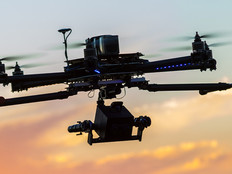How Counties Manage the Body-Worn-Camera Video Data Boom
Body-worn cameras are on their way to being synonymous with police as both officer and public support help their adoption boom. In fact, a recent Pew Research Center report found that two-thirds of police and 93 percent of the public believe that BWCs should be used to record interactions between officers and members of their communities.
The Newark Police Department, for example, recently received a donation of 80 Panasonic Arbitrator body-worn cameras and 15 Arbitrator in-vehicle cameras for a pilot program that aims to increase police transparency.
Meanwhile, in Harris County, Texas, the third-largest county in the U.S., the department recently deployed 2,500 BWCs at the sheriff’s office and across the county’s eight constable precincts after a 60-day trial of more than 50 body cameras.
But as more and more police departments around the country begin to equip with BWCs, IT teams must find ways to manage and store the additional digital evidence produced by these devices.
SIGN UP: Get more news from the StateTech newsletter in your inbox every two weeks
Managing an Ever-More Complex Digital Evidence Ecosystem
In Harris County, the government already manages approximately 10PB of digital evidence from all of its various agencies and sources, a number it expects to double in the next three to five years.
Managing that influx often means integrating the data effectively into an already complex digital evidence management system.
“An agency’s digital evidence management system includes media from in-car cameras, BWCs, interview rooms, video surveillance, third-party video and more,” explains Matt Parnofiello, senior business development strategist at CDW. “These digital evidence repositories are often more complex and diverse than their physical evidence counterparts.”
So how does Harris County manage this enormous influx of data? CDW•G partnered with Panasonic to position the Arbitrator body-worn camera and deployed Dell EMC’s Isilon storage solution alongside it. The vendor partners also support the Harris County Sheriff’s Office interview room and in-car evidentiary video systems, as well as rugged Toughbook mobile devices for the 2,500-vehicle patrol fleet.
Hyperconvergence Tips the Scales for Bergen County
Harris County certainly isn’t the only one challenged with a huge influx of police video. In just a few years, the Bergen County Sheriff’s Office in New Jersey grew the number of cameras from 100, set to monitor doors inside the jail, to more than 3,000 with its continued rollout of in-car and body cameras for officers. To manage this huge influx, the BCSO needed to expand its storage from 1PB to more than 2.5PB in order to maintain a high level of retention and access to footage for law enforcement cases.
“It’s one thing to store large amounts of video, but it’s another thing to get it displayed out to a large desktop environment,” says Phil Lisk, Bergen County CIO and director of IT at the county sheriff’s office.
To maintain a high level of access, Lisk and his IT team turned to Pivot3’s virtual desktop infrastructure (VDI), which would allow them to upgrade existing equipment, control costs, move away from siloed data systems and even simplify future upgrades and tech rollouts. The system dovetailed well with the BSCO’s existing Pivot3 hyperconverged infrastructure, which the county had been using to manage video surveillance data for about 10 years.
“On a management level … this allowed us to store and manage the data in one place. It’s one place for everything, for the desktop experience, the storage experience, the server experience,” said Lisk. “Pushing it out to the user on desktop is also much easier. I can basically have one set up for video and the uniformity goes out to all the users without having to worry about any of the idiosyncrasies on a local desktop computer.”
Finding a way to store that video data in a place where it can be easily retrieved and scaled is one of the largest advantages of Pivot3, Lisk says.
“Video data is not going to go away. It is going to continue to grow and grow. The Pivot3 platform will allow us to plan for that constant influx,” he adds.
BWC Storage Hinges on Policy, Not Technology
The swell of data produced by body cameras is not going to slow any time soon, and managing this influx in the future has more to do with policy, and less to do with technology, Parnofiello notes.
In-vehicle systems are hooked up to an indefinite power source allowing them to run constantly. Body cameras, in contrast, have a finite power source, so they’re activated by the police officer for only about half of the 10- to 12-hour shift. Policy seeks to regulate when and how officers should use these cameras in order to maximize their impact.
“Quality in terms of bit rates and resolution has a huge impact on the amount of data produced by BWCs, but, also, on the management side, it has more to do with the video’s categorization system and associated retention policy. That’s why use policy is so important with these solutions,” Parnofiello notes.
He adds that precincts have many categorizations they could create, examples being traffic stop citations, drunk-driving charges or felony arrests. Many agencies have upwards of a dozen different video evidence categories that help to regulate storage retention policies, Parnofiello says, placing policy at the center of the growing pool of video data with which municipalities must contend.
“Policy before technology. BWCs are as much a policy challenge as a technical solution. The policy decisions that municipalities make will have a large impact on the storage requirements and growth of supporting IT systems,” says Parnofiello. “If the command staff are making use policy decisions that will have digital evidence storage ramifications, we need all stakeholders at the table.”
Learn more here about how Harris County is deploying body-worn cameras and connected police technology.









